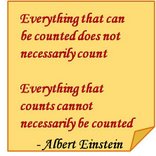The bathroom blogfest started a couple of years ago with - a bunch of global women bloggers narrating their good…bad…and ugly experiences around restrooms.
The theme this year is a bit more inclusive - ‘Flushing the Recession and Plunging into Forgotten Spaces.’
There is not much more I could add around the bathroom customer experience. I have not been actively following that category in my research work nor has the public restroom facilities in India changed a great deal in the last couple of years.
Flushing the Recession...did bring to mind customer experience of a different kind. Earlier in the year when most retail brands had seen a steep drop in sales – the reaction was to announce large discount sales to get back the foot-falls. Their game plan worked and people did rush back. Though the experience at most stores was disappointing to say the least.
All I could remember of my visits to retail outlets during that phase was – brands being reduced to an untidy heap of merchandise…one had to really sift through the pile to get something that matched one’s size or taste. Sales staff were either missing or chatting way in corners and worst of all the discounts were far from attractive. Trial rooms were cramped, with disheveled clothes strewn around the place. And the experience was consistent across brands – whether one stepped into global brand outlet like UCB / Levis or a local brand outlet – it all felt the same. It did really feel like a ‘forgotten space!’ Did sales pick up? I don’t know thought I doubt it. However what such an experience does – is dilute the experience / image that a ‘brand’ creates for a long time to come.
A brand that stood out at that time was one that offered a consistent in-store experience to what it would offer on a ‘non-discount’ day – well stocked, well organized merchandise, courteous...helpful staff, the trial room was spacious, tidy and pleasant.
Brand owners often think that customers never fail to notice a discount in price…what they forget is - the customer will also never fail to notice a discounted experience.
Participating bloggers for the Bathroom Blogfest ’09 include:
• Susan Abbott at Customer Experience Crossroads
• Shannon Bilby at From the Floors Up
• Shannon Bilby and Brad Millner at My Big Bob’s Blog
• Jeanne Byington at The Importance of Earnest Service
• Becky Carroll at Customers Rock!
• Leslie Clagett at KB Culture
• Katie Clark at Practical Katie
• Iris Shreve Garrott at Checking In and Checking Out
• Julie at Julie’s Cleaning Secrets Blog
• Marianna Hayes at Results Revolution
• Maria Palma at People To People Service
• Professor Toilet at Professor Toilet’s Blog
• David Reich at My 2 Cents
• Bethany Richmond at The Carpet and Rug Institute Blog
• Carolyn Townes at Becoming a Woman of Purpose
• Stephanie Weaver at Experienceology
• C.B. Whittemore at Flooring The Consumer and Simple Marketing Blog
• Linda Wright at Lindaloo.com: Build Better Business with Better Bathrooms
Links to the Bathroom Blogfest’s official Blog and Facebook Fan page






